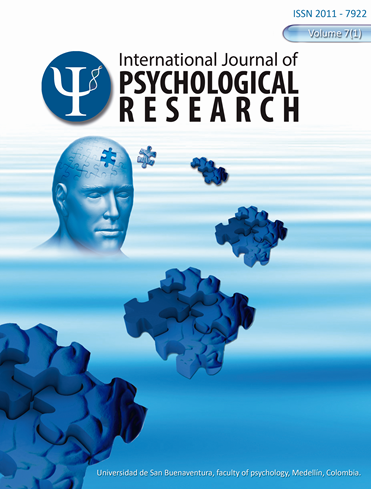Ver/Descargar
Cómo citar
Freiberg Hoffmann, A., de la Iglesia, G., Beatriz Stover, J., & Fernández Liporace, M. (2014). Escala de personalidad paradójica: desarrollo y análisis de validez de constructo. International Journal of Psychological Research, 7(1), 49–72. https://doi.org/10.21500/20112084.667
Más formatos de cita
Términos de licencia
▼
The work that is sent to this journal must be original, not published or sent to be published elsewhere; and if it is accepted for publication, authors will agree to transfer copyright to International Journal of Psychological Research.
To give up copyright, the authors allow that, International Journal of Psychological Research, distribute the work more broadly, check for the reuse by others and take care of the necessary procedures for the registration and administration of copyright; at the same time, our editorial board represents the interests of the author and allows authors to re-use his work in various forms. In response to the above, authors transfer copyright to the journal, International Journal of Psychological Research. This transfer does not imply other rights which are not those of authorship (for example those that concern about patents). Likewise, preserves the authors rights to use the work integral or partially in lectures, books and courses, as well as make copies for educational purposes. Finally, the authors may use freely the tables and figures in its future work, wherever make explicit reference to the previous publication in International Journal of Psychological Research. The assignment of copyright includes both virtual rights and forms of the article to allow the editorial to disseminate the work in the manner which it deems appropriate.
The editorial board reserves the right of amendments deemed necessary in the application of the rules of publication.
To give up copyright, the authors allow that, International Journal of Psychological Research, distribute the work more broadly, check for the reuse by others and take care of the necessary procedures for the registration and administration of copyright; at the same time, our editorial board represents the interests of the author and allows authors to re-use his work in various forms. In response to the above, authors transfer copyright to the journal, International Journal of Psychological Research. This transfer does not imply other rights which are not those of authorship (for example those that concern about patents). Likewise, preserves the authors rights to use the work integral or partially in lectures, books and courses, as well as make copies for educational purposes. Finally, the authors may use freely the tables and figures in its future work, wherever make explicit reference to the previous publication in International Journal of Psychological Research. The assignment of copyright includes both virtual rights and forms of the article to allow the editorial to disseminate the work in the manner which it deems appropriate.
The editorial board reserves the right of amendments deemed necessary in the application of the rules of publication.
Resumen
Se presenta el proceso de construcción y validación de la Escala de Personalidad Paradójica, diseñada a partir de la propuesta de Csikszentmihalyi (1996), quien describiera el concepto evaluado en relación a los individuos creativos. Se redactaron 150 reactivos que fueron sometidos a juicio experto y a examen de validez aparente en un estudio piloto. La versión resultante fue usada en un estudio factorial exploratorio (473 estudiantes; 50.5% varones, 49.5% mujeres; 18 a 35 años; = 21.82; DT= 3.14). La estructura resultante, de 6 dimensiones y 30 ítems, fue confirmada mediante un análisis factorial confirmatorio (800 estudiantes universitarios; 44.4% varones, 55.6% mujeres; 18 a 35 años; = 23.47; DT= 3.30). Ambas muestras provenían de la población de estudiantes universitarios de Buenos Aires, Argentina. También se analizó la consistencia interna y la estabilidad temporal de las puntuaciones, obteniéndose en ambos casos coeficientes aceptables, dada la composición de las dimensiones subyacentes al constructo analizado. Se discuten los resultados a la luz de los modelos teóricos propuestos, las ventajas de la brevedad y sencillez de aplicación y según nuevas líneas de investigación.
Palabras clave:
Descargas
Los datos de descargas todavía no están disponibles.

































